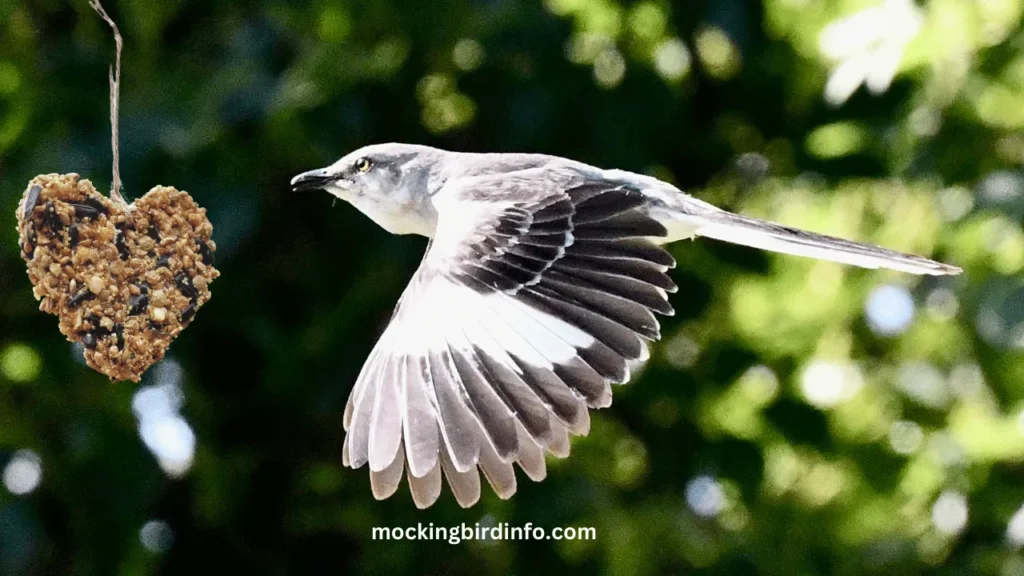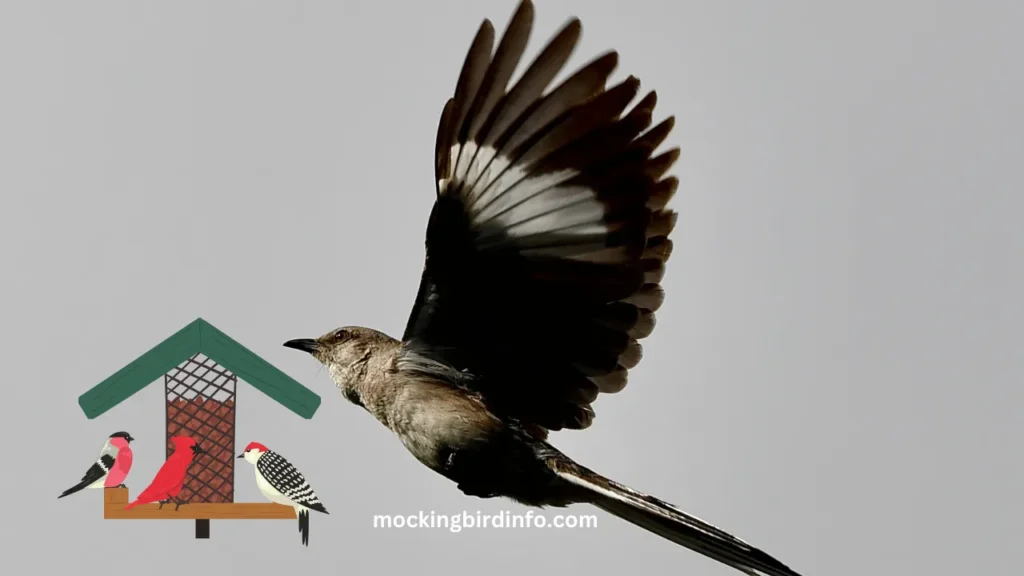Mockingbirds are known for their impressive ability to mimic the songs of other birds and even sounds from their surroundings, but what about their eating habits? These birds don’t just captivate with their vocal range; they also have an equally diverse and adaptable diet.
If you’ve ever watched one hop from branch to branch, you may have wondered what fuels this energetic and talented bird. The answer is as varied as their repertoire. Mockingbirds are omnivores, meaning they consume both plant and animal matter. Their diet changes with the seasons, their environment, and even their individual preferences.
Understanding what mockingbirds eat goes beyond curiosity—it reveals how these birds play an essential role in maintaining balance in ecosystems. From controlling insect populations to dispersing seeds, their feeding behavior influences plant life and other animal species.
In this article, we’ll take a closer look at the factors that shape the diet of mockingbirds, their fascinating foraging behavior, and the broader ecological implications of their eating habits. Whether you’re a birdwatcher, a nature enthusiast, or just curious about these vocal creatures, the world of mockingbird nutrition is worth exploring.
Let’s dive into the multifaceted diet of the mockingbird and discover what keeps these clever creatures well-fed throughout the year.

Contents
Factors Influencing Diet
Seasonality
Mockingbirds are opportunistic feeders, and the availability of food varies greatly depending on the season. During the warmer months, insects make up a significant portion of their diet. This is particularly true during the breeding season when mockingbirds need extra protein to support their young.
In contrast, fruits and berries are more abundant in the fall and winter, so mockingbirds often switch to a plant-based diet during the colder months when insects are harder to find.
Habitat
Where a mockingbird lives also plays a major role in its dietary choices. Birds that reside in urban areas may have access to an abundance of food, from discarded human food to bird feeders filled with seeds.
On the other hand, mockingbirds in rural or wild environments tend to rely more on natural food sources, such as insects and fruits found in trees and shrubs. Urban mockingbirds are more likely to consume human-provided food, which can include everything from bread crumbs to fruit scraps.
Individual Variation
Just as humans have individual tastes, mockingbirds also exhibit dietary preferences that can vary based on age, sex, and experience. Younger birds, for example, may be more reliant on insects as they learn to forage, while older birds may have a more varied diet, including seeds and small reptiles.
Similarly, female and male mockingbirds may show slight differences in their feeding habits, influenced by their roles in the breeding and rearing of offspring.
Foraging Behavior
Visual Foraging
Mockingbirds are equipped with excellent vision, which aids them in spotting potential food sources. They often perch on high vantage points, scanning the ground and surrounding foliage for insects or ripe fruits.
Their sharp eyesight allows them to spot caterpillars, grasshoppers, or even small rodents hidden in the underbrush. This visual acuity is crucial for spotting food, particularly when it comes to insects that camouflage themselves in the environment.
Auditory Cues
In addition to their keen eyesight, mockingbirds also rely heavily on their hearing when foraging. Their ability to detect the subtle sounds of insects, especially in thick vegetation, is key to their survival.
Whether it’s the rustling of leaves caused by caterpillars munching on foliage or the buzz of grasshoppers, mockingbirds use their exceptional hearing to pinpoint prey that might be otherwise hard to find. This skill helps them locate hidden insects, making them highly effective hunters.
Opportunistic Feeding
Mockingbirds are not picky eaters; they are opportunistic feeders, meaning they will take advantage of whatever food is available. If a fruit tree is full of berries, they will gladly feast on them.
If insects are scarce, they may turn to other food sources, such as seeds, nectar, or even small reptiles. Their flexible feeding behavior enables them to thrive in a wide range of habitats, from urban parks to wild forests.

Diet Composition
Insects
A significant portion of a mockingbird’s diet consists of insects, especially during the breeding season. These can include a variety of species, such as beetles, grasshoppers, caterpillars, and spiders.
Mockingbirds are particularly skilled at catching flying insects mid-air, making them efficient hunters. Insects provide essential protein, which is especially important for the growth and development of their young.
Fruits
Mockingbirds enjoy a wide variety of fruits, including berries, grapes, cherries, and apples. These fruits are not only delicious but also provide essential nutrients and vitamins. Mockingbirds often feed on fruits found in trees, shrubs, or vines, especially when other food sources are scarce.
Their love for berries can contribute to the dispersal of seeds, as the birds eat the fruit and excrete the seeds in different locations.
Seeds
In winter, when insects and fresh fruit are harder to come by, mockingbirds turn to seeds as a vital food source. Sunflower seeds, pumpkin seeds, and even acorns can be found in their diet during the colder months. Seeds provide the necessary energy to help mockingbirds survive the winter, especially when the temperature drops and food is less abundant.
Other Food Sources
Mockingbirds are highly adaptable and will sometimes consume other food sources when necessary. For instance, they may eat nectar from flowers or even small lizards or bird eggs. These additional food sources allow mockingbirds to remain well-fed in a variety of environments and weather conditions.
Impact on Ecosystems
Seed Dispersal
Mockingbirds play a key role in seed dispersal. As they eat fruits, they often swallow the seeds whole and later excrete them in new locations. This helps spread the seeds of various plants, aiding in plant reproduction and diversity.
Without mockingbirds, many plant species might struggle to propagate, especially those that rely on birds for seed transport.
Insect Control
Mockingbirds are natural predators of many pest insects, such as beetles and caterpillars. By keeping insect populations in check, mockingbirds help prevent these pests from damaging crops and plants. This makes them valuable allies for gardeners and farmers who want to control pest populations without resorting to pesticides.
Ecosystem Balance
The mockingbird’s diverse diet contributes to the balance of the entire ecosystem. By feeding on a variety of food sources and acting as a predator, seed disperser, and pollinator, they help maintain the health of both plant and animal populations.
Their feeding habits are interconnected with the broader food web, affecting not only the plants and insects they consume but also other birds and animals that rely on these resources.
Conclusion
Mockingbirds are more than just talented vocalists—they are omnivorous feeders whose diet plays a crucial role in maintaining healthy ecosystems. From their ability to control insect populations to their contributions to seed dispersal, mockingbirds help ensure a balanced environment.
Their diverse diet, which includes insects, fruits, seeds, and more, reflects their adaptability and resourcefulness. Understanding what mockingbirds eat gives us insight into their importance in nature and highlights the need to protect the habitats that sustain these remarkable birds.
Conserving the environments where mockingbirds thrive, such as urban parks and rural woodlands, is essential for maintaining the biodiversity they help sustain. As we continue to learn more about the feeding habits of mockingbirds, we gain a deeper appreciation for their role in the delicate balance of the natural world.
Frequently Asked Questions (FAQs)
1. What do mockingbirds eat during the winter?
During winter, mockingbirds primarily feed on fruits, berries, and seeds. They may also eat nuts and acorns when available.
2. Do mockingbirds eat insects?
Yes, mockingbirds consume a wide variety of insects, including beetles, grasshoppers, and caterpillars.
3. Can mockingbirds eat human food?
While mockingbirds are primarily insectivores and frugivores, they may consume human food if it is readily available, such as bread crumbs or discarded fruit.
4. Do mockingbirds eat small animals?
Yes, mockingbirds may occasionally eat small reptiles, lizards, and even bird eggs when other food sources are scarce.
5. What fruits do mockingbirds like?
Mockingbirds enjoy a variety of fruits, including berries, grapes, cherries, and apples.
6. How do mockingbirds find their food?
Mockingbirds use their sharp vision to spot food and their excellent hearing to detect insects hidden in vegetation.








